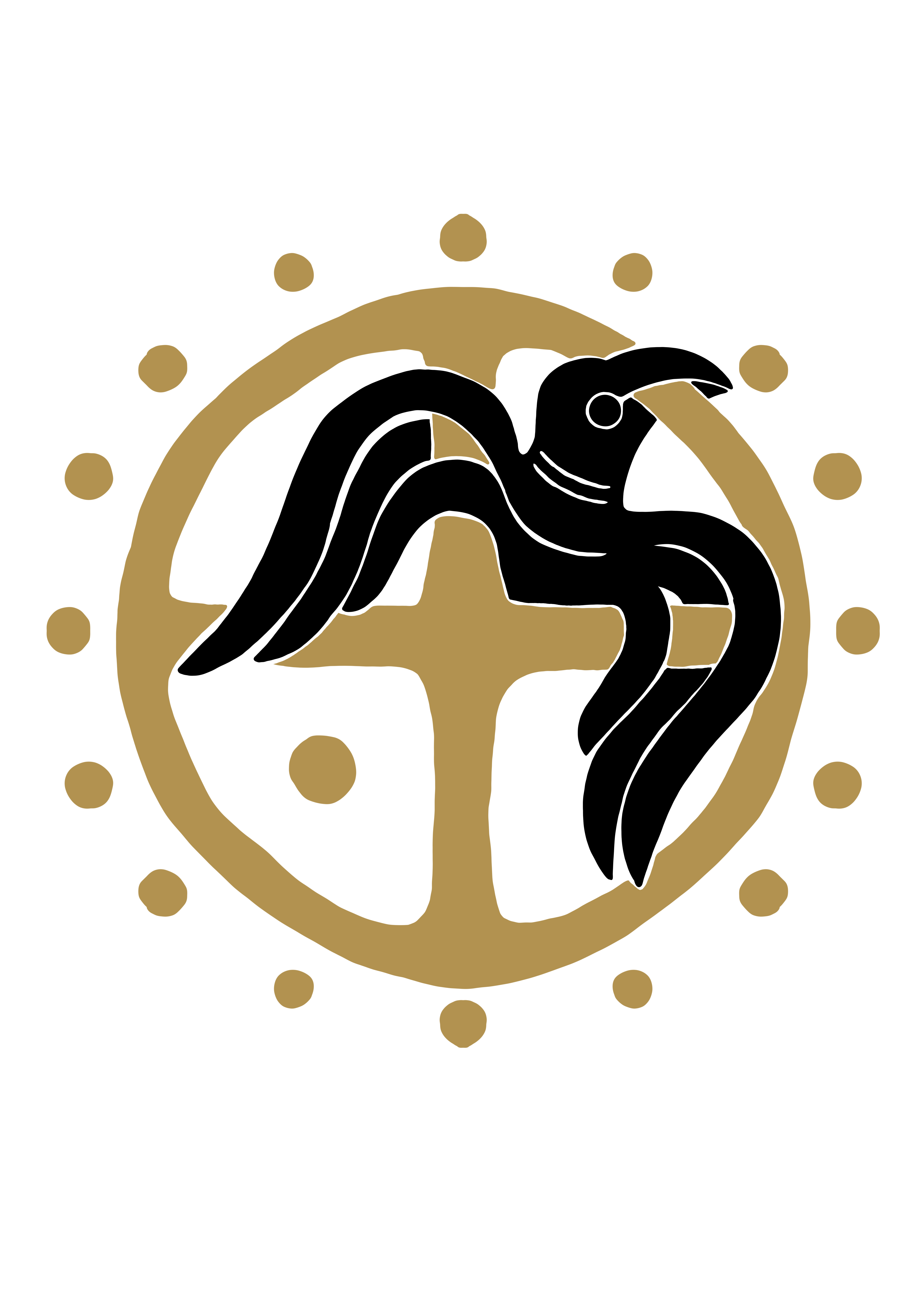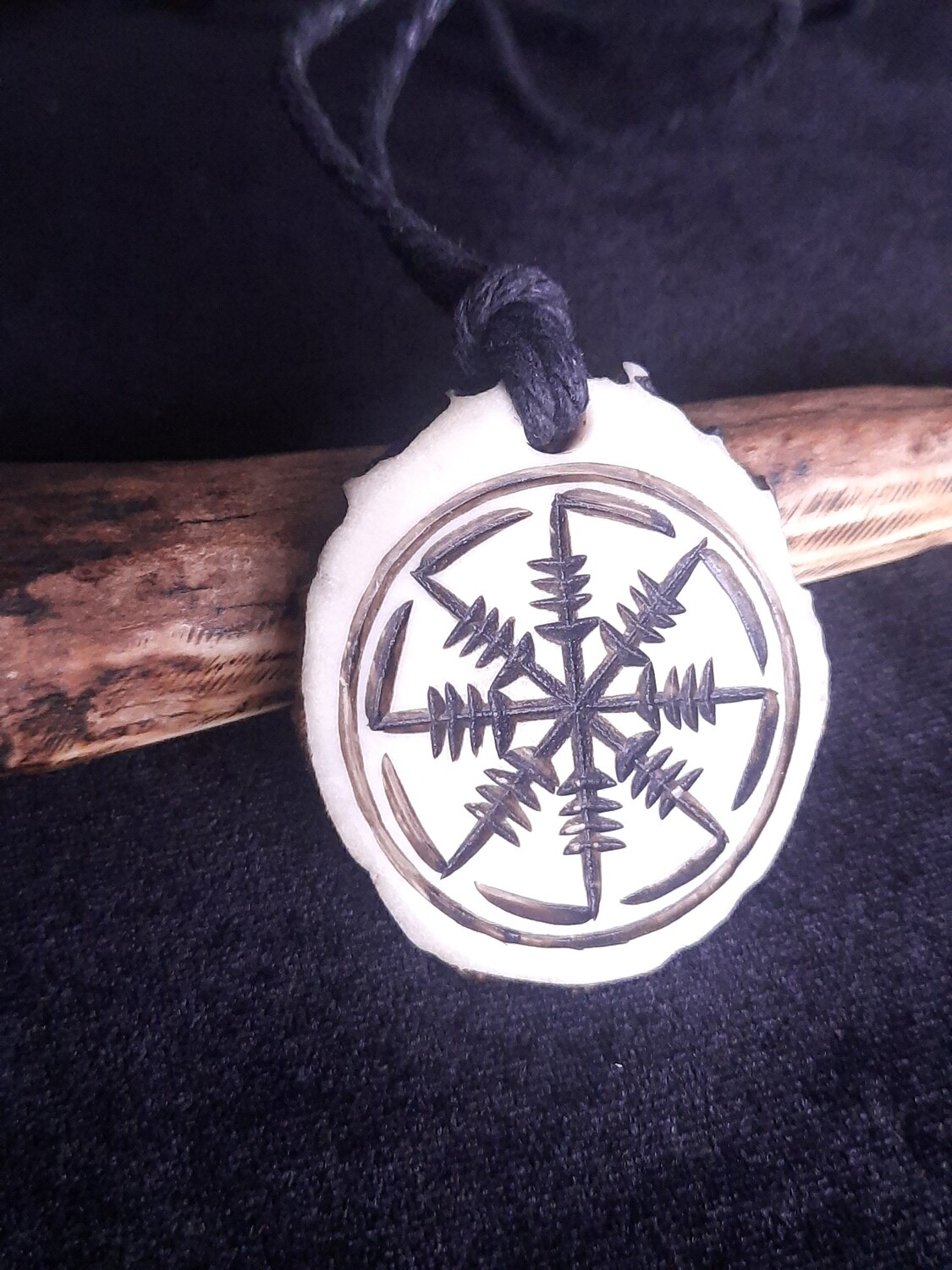Viking Solar - Swastika Amulet with Tiwaz Rune devoted to God Tyr, Antlers Hand-Carved
Enter the realm of Norse mysticism with our Viking Solar Amulet, a powerful symbol of guidance and protection dedicated to the god Tyr. Crafted with reverence from the noble material of moose antlers, this exquisite amulet measures 3.2 x 4 cm (1.3 x 1.6 inches), making it a perfect companion for those seeking the blessings of the Norse gods.
At its heart lies the Tiwaz rune, a sacred symbol named after Tyr himself. Known as the god of law, justice, and heroic glory, Tyr was revered by the Vikings for his unwavering courage and sense of duty. The Tiwaz rune, an ideographic representation of a spear, embodies the essence of Tyr's martial prowess and protective instincts, making it an emblem of strength and resolve.
Carved with meticulous precision, this amulet serves as a tangible link to the ancient traditions of the Viking Age. The use of moose antlers, chosen for their strength and durability, honors the legacy of craftsmanship that defined Norse culture. Importantly, no harm befell any animal in the making of this piece, as moose naturally shed their antlers from late March to mid-April, ensuring a sustainable and ethical creation.
Whether worn as a talisman for personal protection or displayed as a symbol of reverence on a Pagan altar, this Viking Solar Amulet embodies the enduring spirit of Tyr and the power of the Tiwaz rune. It serves as a reminder of the strength that lies within each of us, and the divine guidance that watches over us in times of need.
Embrace the wisdom of the ancients and harness the protective energies of the Norse gods with our Viking Solar Amulet. Let its presence inspire courage and fortitude as you navigate the challenges of life's journey.
Reference: The swastika design is known from artefacts of various cultures since the Neolithic, and it recurs with some frequency on artefacts dated to the Germanic Iron Age, i.e. the Migration period to Viking Age period in Scandinavia, including the Vendel era in Sweden, attested from as early as the 3rd century in Elder Futhark inscriptions and as late as the 9th century on Viking Age image stones.

